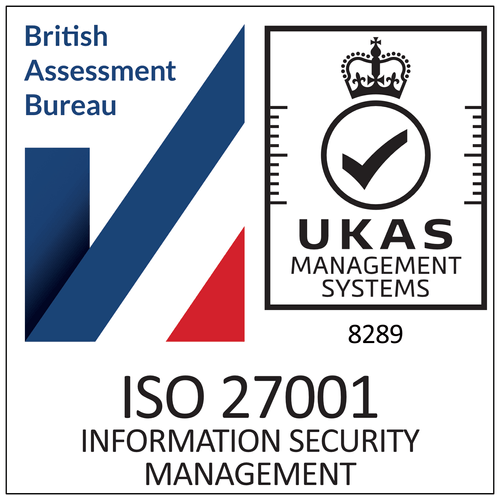We get it. It is not always easy to compare LMS (learning management system) solutions. In this guide, we list important criteria to consider when evaluating LMS solutions, and how Learnster stands out to other, traditional providers.
1. High barriers to entry vs. user-friendliness for all (both learners and admins!)
Your LMS should feel like a breeze. It should be motivating and take your work to the next level. The user experience is vital to both the learners and admins. Make sure you choose an LMS that actually lives up to modern expectations. Trust us, you would not want to swap user-friendliness for anything.
At Learnster, user-friendliness has been our top priority since day one. We work tirelessly to ensure user-friendliness for all.
"The platform is intuitive and user-friendly. It is easy to get started, even with traditionally advanced functions such as automation rules. Learnster is a great platform for building professional courses - from day one!"
- Richard Nordlander, HSEQ Manager, Cargo Survey
2. Time-consuming course production vs. smooth built-in authoring tool
Historically, the sole purpose of an LMS was course distribution, usually through SCORM files. This meant that you had to produce courses in separate authoring tools. When course production finally moved into the LMS environment, the user experience lagged behind. And it still does today.
A smooth authoring tool is key. Both when producing and updating learning materials (which happens quite frequently in our fast-changing world!). User friendliness enables involving the organization’s subject matter experts, who usually lack course production experience.
With Learnster, you can create, package and distribute content in the same platform. The built-in authoring tool lets you create courses with a smooth drag-n-drop interface. Create world-class learning experiences in a simple and intuitive way.
3. Top-down vs. top-down & bottom-up
Traditionally, the LMS was exclusively an HR and L&D tool. It was for distributing training and information in a top-down manner, from management level and out to the organization. Even follow-up analysis was managed centrally.
Top-down initiated training is still necessary, especially for compliance purposes. But as a sole method, it may prevent you from leveraging valuable knowledge from other parts of the organization. As a learning organization, you want to aim for both top-down and bottom-up knowledge sharing.
Learnster lets you involve the entire organization. As well as user-friendliness, dynamic admin roles provide customized access and functionalities. Invite subject matter experts to contribute to, or take full ownership of learning material. Or why not give team managers insight into their team’s learning journeys?
4. Push vs. pull
A majority of traditional LMSs are designed for pushing information out in the organization. This is of course an important part of onboarding and compliance training. But it does not encourage individual learning initiatives.
Studies show a strong link between skills development opportunities and employee satisfaction. Accessible, bite-sized learning resources also enable learning at the point of need, which boosts employee productivity.
Learnster combines both push and pull. That means that you, in addition to delegating training, can enable self-driven learning opportunities. Provide an academy of both mandatory and optional training for career development. Or why not build a library of micro learning resources such as guides, manuals, videos and important documents.
"Since introducing Learnster, our employees have started to take more ownership of their own skills development."
- Mikaela Ljunggren, Learning & Development Specialist, PE Accounting
5. Static learning environment vs. blended learning environments
In the hybrid workplace, it may be tempting to simply repackage content från classroom training into online courses. However, it has proven to have a negative impact on the learning experience. Training needs to be dynamic and interactive, even when it happens online.
With Learnster, you can combine online courses with virtual classroom sessions. Provide blended learning environments, even for online training. Integrate with external video conferencing tools such as Microsoft Teams, Google Meet and Zoom.
6. Time-consuming admin vs. automation
An LMS should make life easy for admins and instructors too! Manual admin work consumes valuable time and resources, whilst increasing the risk of human error. An LMS should both optimize and support your work.
Let Learnster do the work for you! Our smart automation rules help your quality-assure and automate admin and repetitive tasks, including:
- processes for onboarding and offboarding
- rules and IFTTT (if-this-then-that)
- personalized learning journeys
- user provisioning
- allocation to teams and groups
- messages, notifications and reminders
7. Limited overview vs. follow-up and statistics (all the way down to page level!)
Sufficient and relevant data is key to measuring the impact of your training interventions. But it may be challenging to identify and navigate the type and quantity of data that most platforms generate.
Learnster provides clear and detailed data, all the way down to page level. Pick and filter data for your specific purpose. Custom reports give you results based on learner, team, courses, status and progress, etc.
"With Learnster, we can easily track our learners’ progress and results. We develop the course offering based on the data."
- Jesper Goudoulakis, Director of Development, Avensia
8. Multiple systems vs. a one-stop-shop for learning
LMSs have traditionally been associated with management of formal training. But as you probably know, learning happens everywhere and all the time. In the day-to-day work, in the recruitment process, and through the entire employee journey.
With Learnster, you can build a one-stop shop for all your organization’s learning needs. From preboarding and onboarding to offboarding - and all skills development in between. Synchronize with the recruitment platform Teamtailor to test knowledge levels and introduce your company to the candidate early in the recruitment process.
Create and share formal training as well as bite-sized learning resources including guides, manuals, videos and documents.
9. Self-service support vs. support by real people
When you get stuck, all you want is to quickly get back on track. Self-service support and articles can be helpful. But sometimes, they simply don’t do the job.
With Learnster, you get real support from real people. We are here to help if you get stuck with the platform, or with your learning strategy.
"I want to thank the Learnster team for the collaboration and all the support to ensure our employees receive the best possible learning experience."
- Aron Koppel, Training Project Manager, Euronics
10. 24 months of implementation vs. up and running in just a few weeks
A slow and clunky LMS requires a lot of time to set up and maintain. This is not ideal when time and resources are scarce.
Larger, more complex organizations undoubtedly need a slightly longer onboarding and implementation phase. But for organizations eager to get started, our dedicated customer success team will be running at your pace and help you move forward.




